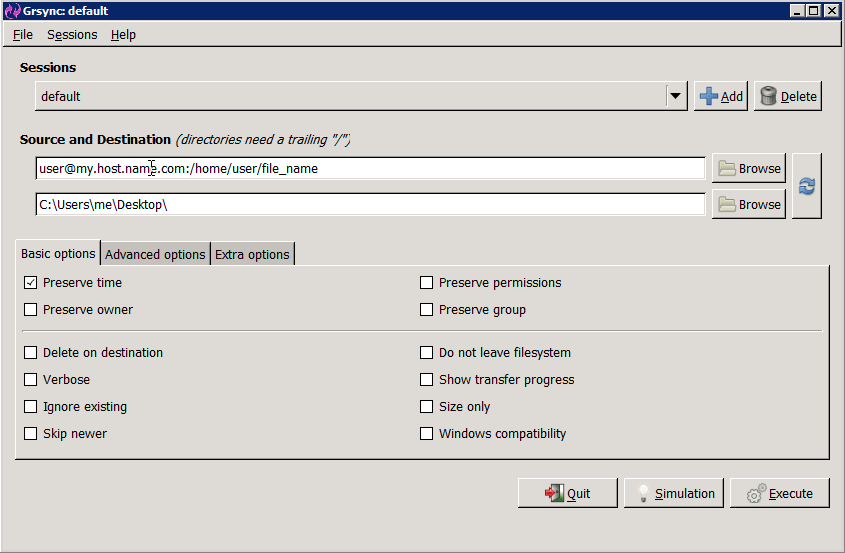
- #GRSYNC WINDOWS SCHEDULING MANUAL#
- #GRSYNC WINDOWS SCHEDULING PC#
- #GRSYNC WINDOWS SCHEDULING LICENSE#
Here are few considerations for applying this solution in a real environment, here’s my experience: PST files, you cannot copy them when Outlook is opened
#GRSYNC WINDOWS SCHEDULING MANUAL#
If your rsync share point has a password as mine you need to type it on command line if you’re executing this command as it is if you’re scripting it into your own program you need to export a Windows variable called RSYNC_PASSWORD (set RSYNC_PASSWORD=”your pass”) to have it running, read rsync manual page for details.īe careful about locked files, rsync and every windows program will fail the backup if the file you want to copy is locked by someone else, an example ? Take a look at Outlook.
#GRSYNC WINDOWS SCHEDULING PC#
ComputerID is just a directory inside your rsync share point, use different directories for different PCs so you’ve a dir for each pc of your net (use MachineID, username or whatever you want).Įrrorlog.txt is my log file where rsync operations are stored, very useful for further readings Why ? Because I store rsync, DLLs and my batch file inside this is the rsync path where you want to sync your data, “myfavoritenas” is the machine name, “array1_backup” are username and “rsync share point”. –exclude flag: directories to exclude from your backup path (inside c:ackuphomedir), so directories starting with “system” (like: c:ackuphomedirsystem, c:backuphomedirsystem32, …) will be excluded from your copy. cygdrive/c/backuphomedir/ it’s the home dir where you want to start from copying your data, for Windows users the translated path is “C:ackuphomedir“, I’ve reported “/cygdrive/c/backuphomedir/” because cygwin environment starts with “/” (as UNIX), then it appends “cygdrive” (all local drives) then the name of the Windows drive “c”, then your backup sourcedir (backuphomedir). This command works with previous samples from past episodes, now pay attention to parameters related to your own machine settings like: stats give some transfer statistics (again, useful for logging) group -specials preserve group and special files

delete delete file from remote host if local files doesn't exists anymore

compress compress file data during transfer recursive copy directory specified and go recursively into subdirs I don’t want to enter into rsync syntax flags deeply when you’ve an excellent man page (like this one ), but briefly: -verbose be verbose on operations, useful for generated log file This is the raw command used for tests, of course you need to script it in a batch file or wherever you want. links -times -exclude=”system*” 1> “errorlog.txt” 2>&1 Rsync has an excellent manual and configuration page, a ton of options ready for you, here’s just what I’m using for my backups: rsync -verbose -recursive -compress -delete -perms -owner -group -specials -stats -devices

These files allows rsync to work properly and syncing your local disk with a remote RSync server. As you imagine these files are taken from a working cygwin installation: you can download them from the net, from a working cygwin environment or directly from.
#GRSYNC WINDOWS SCHEDULING LICENSE#
Now for the latest article of this first rsync saga I’d like to share with you my current Windows clients configuration, as I’ve already explained, rsync is quite easy to understand and configure in your windows client you only need these files:Ĭopying.txt is the GPL public license, it’s needed only for license purpouses, the other files: 2 DLLs ( cygpopt-0.dll, cygwin1.dll) and 1 EXE file ( rsync.exe) are part of your solution.


 0 kommentar(er)
0 kommentar(er)
